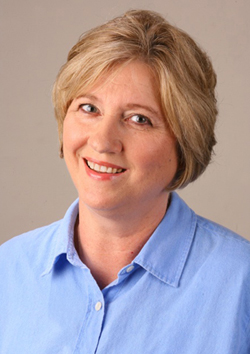What's for lunch on Inauguration Day? Ask Florida State expert
After being sworn in as the 44th president, Barack Obama will head inside to the U.S. Capitol's Statuary Hall to join family members, guests and Congressional leaders for the inauguration luncheon, in keeping with a tradition introduced by Harry S. Truman and embraced by every subsequent president except Jimmy Carter.

This year's menu features seafood stew with lobster, scallops, shrimp and black cod under puff pastry; pheasant and duck with sour cherry chutney and molasses sweet potatoes; and apple cinnamon sponge cake and sweet cream glace, all with carefully selected wine accompaniments. Inaugural luncheons are always special events, and inaugural-luncheon guru Elizabeth B. Goldsmith of The Florida State University can share a smorgasbord of historical details on the food, china and all manner of spirits as well as other insider anecdotes from inauguration days past.
"The luncheons are important not only because they are the president's first meal as Commander-in-Chief but also because they are genuinely happy events where the nation, not politics, comes first," said Goldsmith, a human-sciences professor and Fulbright Scholar at Florida State. Nationally known and oft-quoted, she also is a former policy adviser to the White House on women's and girls' economic education, and has spent the past few decades researching personal finance and investing behavior, women and money, work and family issues, and the functioning of homes — including the White House.
In fact, since 1992, Goldsmith has conducted her research in venues ranging from the White House curator's office and the Smithsonian to presidential libraries and former Florida Sen. Claude Pepper's library on the Florida State University campus.
Given a nation in the throes of a painful, protracted recession, the 2009 inaugural luncheon may be comparatively austere, or at least, different from those in recent inaugural years.
Such differences in tone are not unprecedented, Goldsmith said. "Before Truman moved lunch to the Capitol, inauguration luncheons took place in lots of different places," she said. "Sometimes they were held in hotels. On the other hand, President William McKinley grabbed a corned-beef sandwich and a cup of coffee in one of the Senate's committee rooms."
In 1941, President Franklin D. Roosevelt and 1,200 guests convened in the White House for a simple buffet lunch of tomato soup; salad; beef, ham and tongue; and cake, ice cream and coffee, according to a description of the event, cited by Goldsmith, from Henrietta Nesbitt, the executive mansion's housekeeper.
"Roosevelt requested chicken a la king for his final inaugural lunch, but Nesbitt explained that they couldn't keep it hot for 2,000 guests and instead offered up chicken salad and rolls, unfrosted pound cake and coffee," Goldsmith said.
President Truman decided to move his luncheon to the Capitol and, in his customarily understated manner, downsized the number of guests.
"As one might expect, President and Mrs. Kennedy held an elegant affair," Goldsmith said. "The 1961 inauguration luncheon menu in the Capitol's historic Supreme Court Chamber included delicacies such as cream of tomato soup with crushed popcorn and New England boiled stuffed lobster, and concluded with patisserie bateau blanche, mints and coffee."
In 1965, President Johnson's inaugural menu offered pink grapefruit supreme; relish tray; Texas heart of filet mignon; tomato surprise; string beans in butter; avocado and romaine salad; rolls and butter; and "The President's Delight" as the featured dessert, according to Goldsmith.
"And over the years, lunches have grown more elaborate," she said. "For instance, President Bill Clinton's 1997 luncheon included champagne toasts as well as an impressive menu."
President George W. Bush began his first term in 2001 by joining 230 guests for a gourmet repast featuring the Senate's best china and music from the U.S. Army Brass quintet, Goldsmith said. The luncheon menu boasted lobster pie; grenadine of beef supreme; chartreuse of vegetables in a puff pastry ring; puree of small celery and parsnip roots; biscuits; toffee pudding with ice cream; and demitasse café and tea along with trays of chocolate-dipped ginger, candied fruit rinds, fresh strawberries, macaroons and truffles.
"In 2005, the Bush luncheon had a Native American theme that included quail, china with a woodland design, and a tribute to Teddy Roosevelt and Lewis and Clark," Goldsmith said.
"One thing never changes," she said. "In good economic times and bad, during war or peace, the mood at the inauguration luncheon is always celebratory."
"The luncheons are important not only because they are the president's first meal as Commander-in-Chief but also because they are genuinely happy events where the nation, not politics, comes first."
Elizabeth B. Goldsmith
Florida State University College of Human Sciences